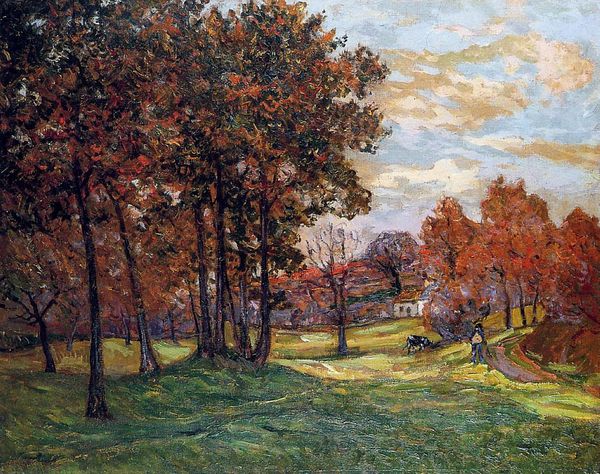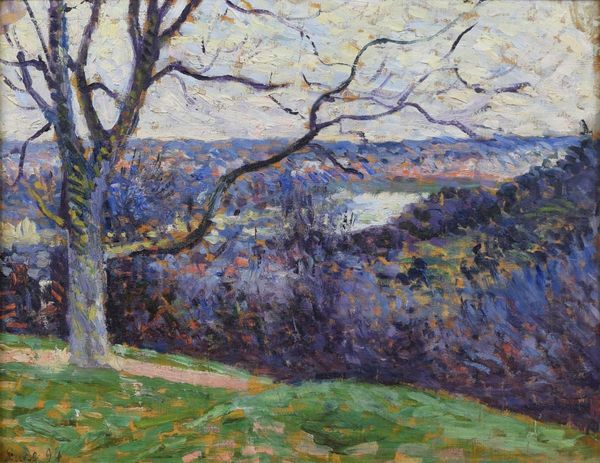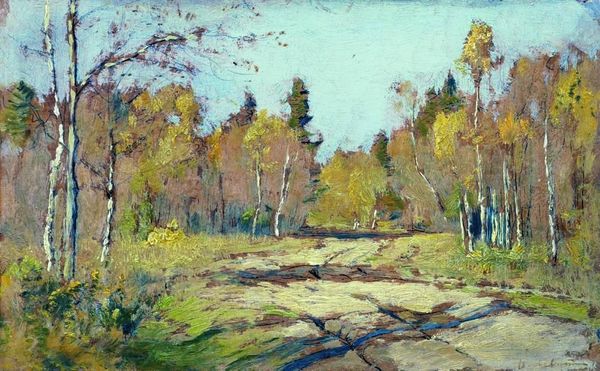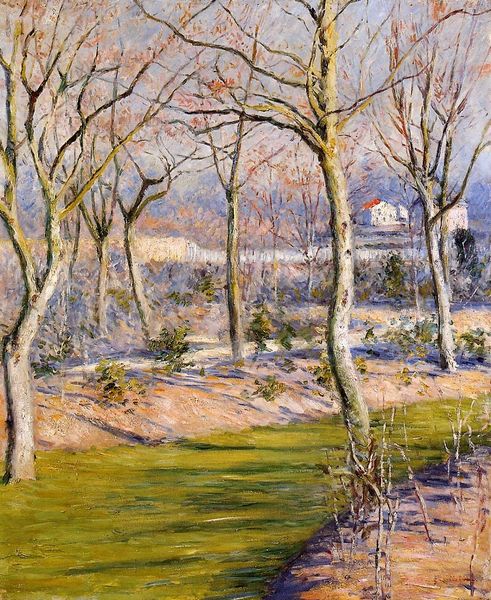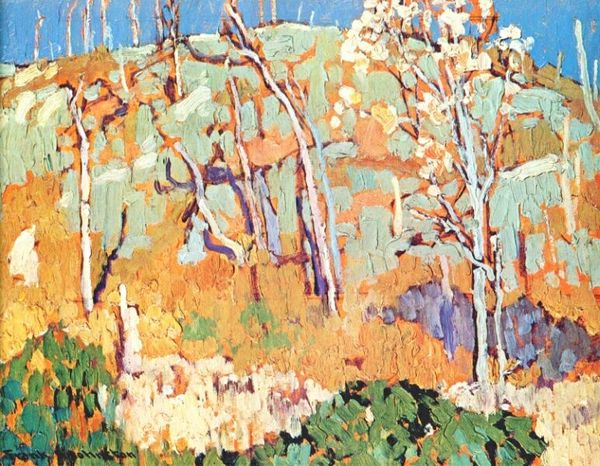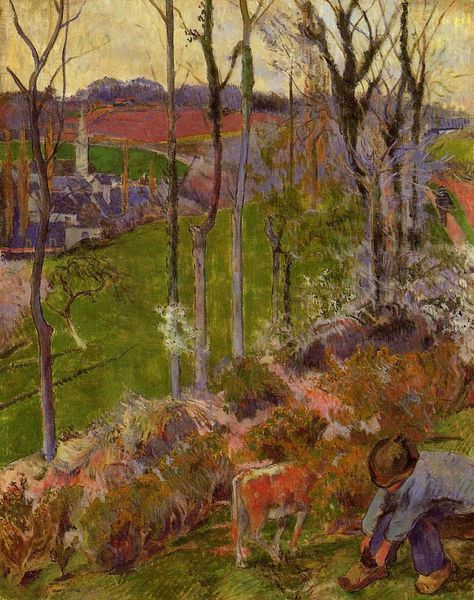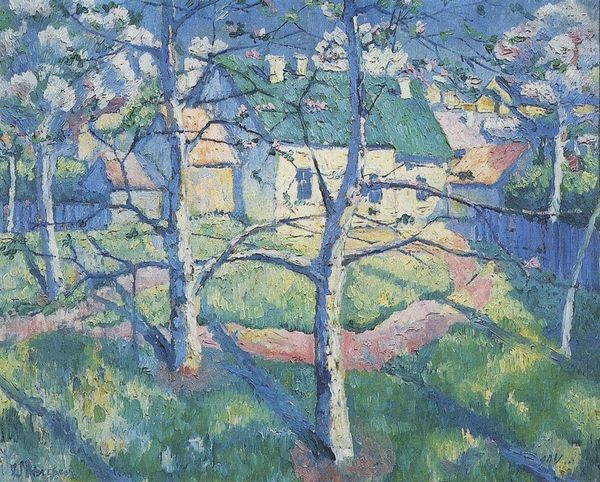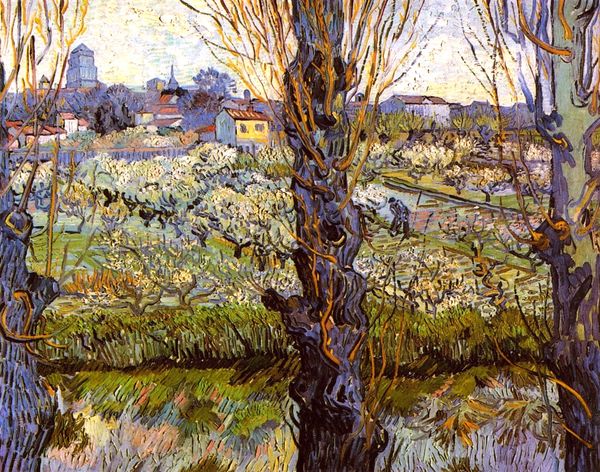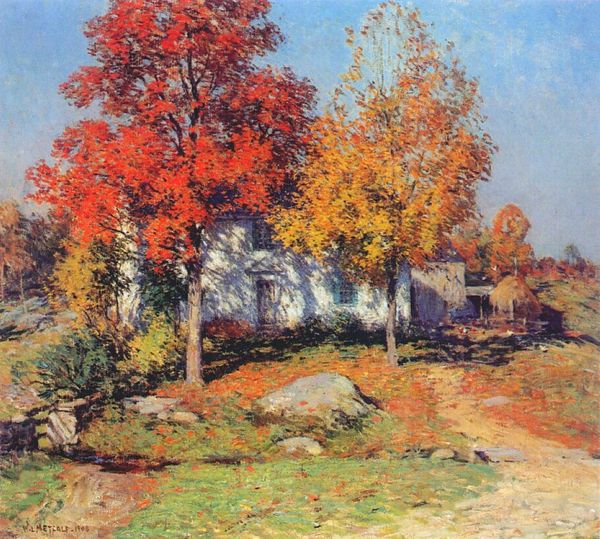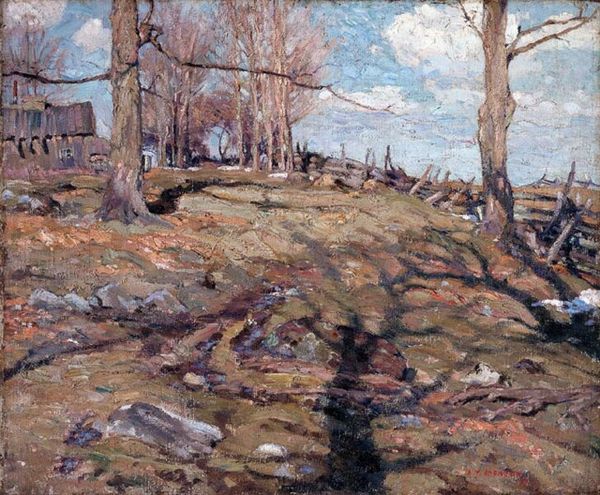
#
tree
#
impressionist
#
abstract expressionism
#
abstract painting
#
impressionist landscape
#
nature
#
fluid art
#
landscape photography
#
plant
#
seascape
#
coastline landscape
#
expressionist
Copyright: Public domain
Curator: Standing before us is Clarence Gagnon’s 1922 painting, "Lonely Village on the Saint Lawrence.” Editor: It's remarkably vibrant, isn’t it? The way the light catches those autumnal colors feels almost aggressive. There’s a loneliness to it, though, a kind of quiet resignation in those bare trees. Curator: Gagnon often presented idealized images of rural Quebec. But it's interesting to consider that this painting was created during a time when many rural areas were experiencing decline due to industrialization. Could it be that “loneliness” you're picking up on is, in fact, an elegiac portrait of changing times? Editor: Perhaps. Or it’s the tension between the brilliant landscape and the imposing presence of the dwelling with that one visible red chimney asserting itself so confidently amid the blue sky. Does the dwelling feel welcoming to you? Curator: The symbol of "home" is so potent. But as settlement expanded, pushing further into indigenous land, the idea of "home" and who had access to it became a contested political subject. We can think about what is not shown, too—the voices, struggles, and displaced inhabitants—as much as we fixate on the beautiful, romantic imagery. Editor: True, the painting doesn't overtly reveal those power dynamics, yet they are there. Art critics talk a lot about how Canadian landscape painting presents and defines national identity, but it's rare that such idyllic views include any people at all. Why the persistent avoidance of figures in these landscapes? Curator: Exactly, because people, inhabitants of the space, inevitably bring in narrative, they are political, cultural symbols; not including them keeps it abstract, pristine, idealized, almost like the viewer is being told to possess this land. By the time Gagnon was painting, early twentieth century, such an action or mindset could carry the trauma of colonialism. Editor: All of which, arguably, infuses the piece with far more emotional weight and ambiguity than we might initially perceive. Perhaps that sense of longing is more complex than mere nostalgia. Curator: I agree. The brilliance disguises the undertones. It encourages viewers to ponder our own relationship with the past, land ownership, and the narratives we choose to see... or not see. Editor: Well, it has given me a lot to consider regarding the selective process that frames Canadian identity. The loneliness here carries more cultural and social complexity than I realized.
Comments
No comments
Be the first to comment and join the conversation on the ultimate creative platform.

